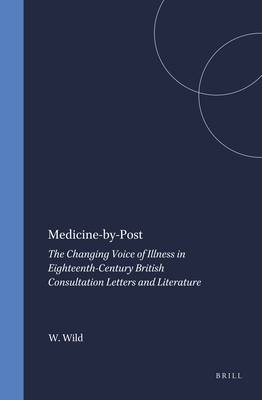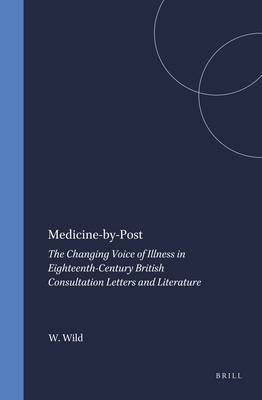
- Afhalen na 1 uur in een winkel met voorraad
- Gratis thuislevering in België vanaf € 30
- Ruim aanbod met 7 miljoen producten
- Afhalen na 1 uur in een winkel met voorraad
- Gratis thuislevering in België vanaf € 30
- Ruim aanbod met 7 miljoen producten
Zoeken
Medicine-By-Post
The Changing Voice of Illness in Eighteenth-Century British Consultation Letters and Literature
Wayne Wild
€ 157,45
+ 314 punten
Omschrijving
Medicine-by-Post is an interdisciplinary study that will engage readers both in the history of medicine and the eighteenth-century novel. The correspondence from the large private practices of James Jurin, George Cheyne, and William Cullen opens a unique window on the doctor-patient relationship in England and Scotland from this period. The letters, many previously unpublished, reveal a changing rhetoric that mirrors contemporary shifts in medical theory and the patient's self-image.
Medicine-by-Post uncovers the strategies of self-representation by both healers and patients, and reinterprets the meaning of illness and the medical encounter in eighteenth-century literature in the light of true-life experience. The tension between the patient's personal needs and the doctor's professional will presents a ready metaphor for the novelist, depicting the social expectations placed upon the individual as well as a measure of one's moral character in the context of illness.
The correspondence also demonstrates the subtle changes in rhetoric regarding 'sensibility', reflecting evolving medical speculation. It also describes the differing perspectives of the female body between doctors and novelists and the women patients themselves. Yet much of this correspondence shows an unexpected blend of metaphor with a realistic and utilitarian approach to therapeutic advice and the patient's own compliance. In these letters we discover some genuinely sympathetic doctors.
Medicine-by-Post uncovers the strategies of self-representation by both healers and patients, and reinterprets the meaning of illness and the medical encounter in eighteenth-century literature in the light of true-life experience. The tension between the patient's personal needs and the doctor's professional will presents a ready metaphor for the novelist, depicting the social expectations placed upon the individual as well as a measure of one's moral character in the context of illness.
The correspondence also demonstrates the subtle changes in rhetoric regarding 'sensibility', reflecting evolving medical speculation. It also describes the differing perspectives of the female body between doctors and novelists and the women patients themselves. Yet much of this correspondence shows an unexpected blend of metaphor with a realistic and utilitarian approach to therapeutic advice and the patient's own compliance. In these letters we discover some genuinely sympathetic doctors.
Specificaties
Betrokkenen
- Auteur(s):
- Uitgeverij:
Inhoud
- Aantal bladzijden:
- 292
- Taal:
- Engels
- Reeks:
- Reeksnummer:
- nr. 79
Eigenschappen
- Productcode (EAN):
- 9789042018686
- Verschijningsdatum:
- 1/01/2006
- Uitvoering:
- Hardcover
- Formaat:
- Genaaid
- Afmetingen:
- 150 mm x 225 mm
- Gewicht:
- 589 g

Alleen bij Standaard Boekhandel
+ 314 punten op je klantenkaart van Standaard Boekhandel
Beoordelingen
We publiceren alleen reviews die voldoen aan de voorwaarden voor reviews. Bekijk onze voorwaarden voor reviews.








